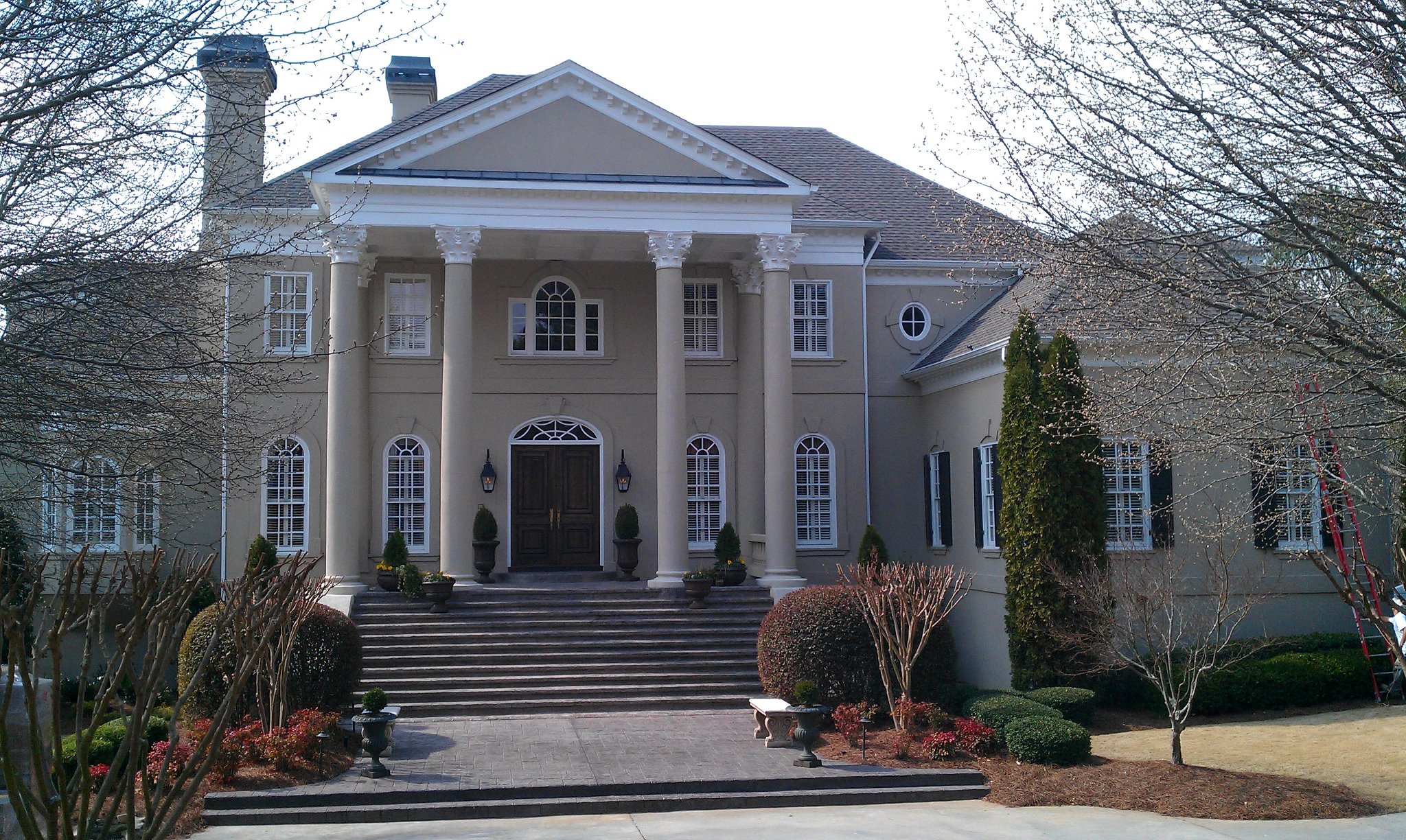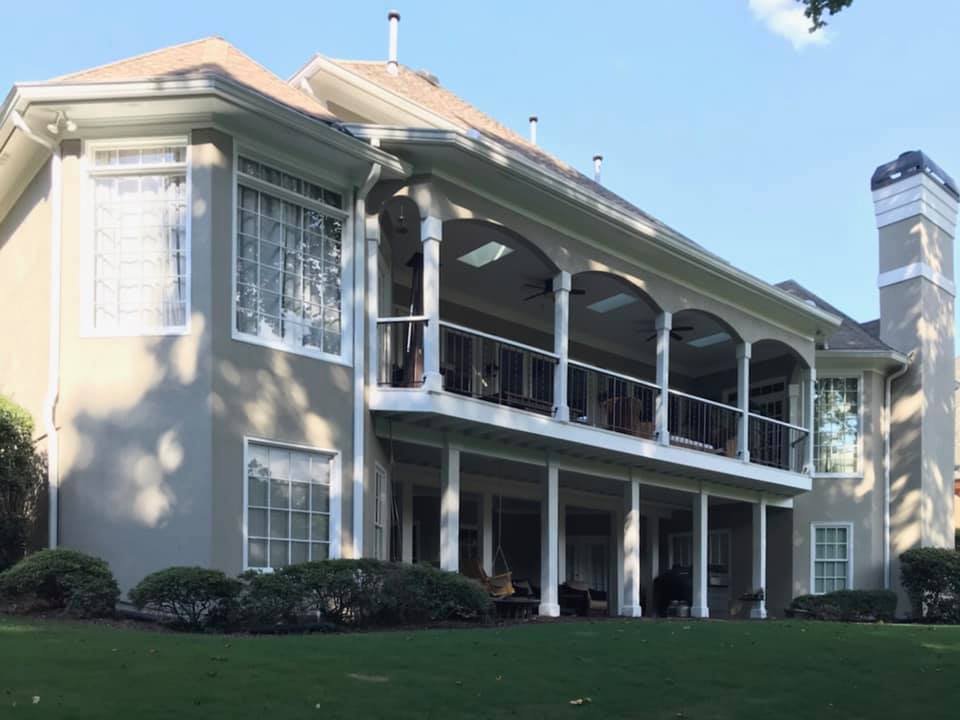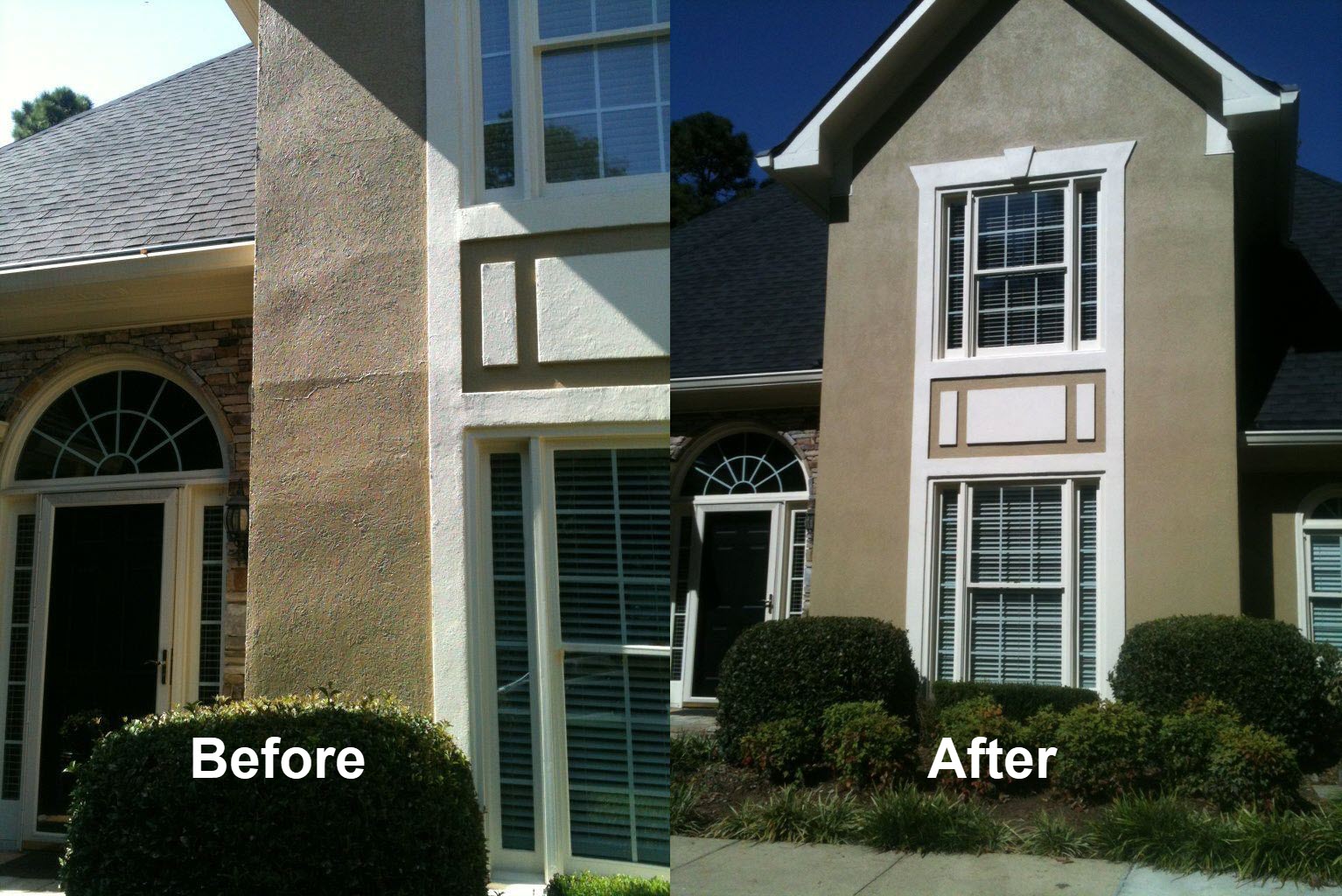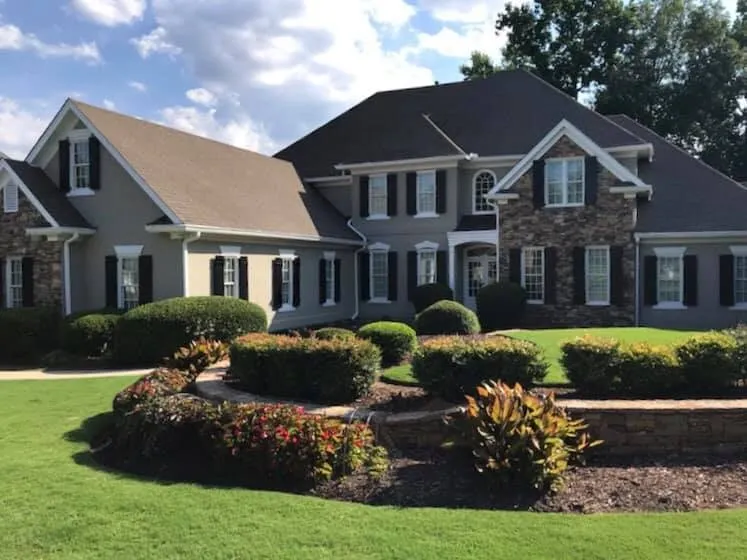Insulation Boardsin Vinings GA
Maximizing Comfort with Innovative Insulation Boards
We Are Locally Owned & Operated For Over 24 Years
We Serve Businesses In And Around The Following Cities:
About Insulation Boards in Vinings, Georgia
Understanding Insulation Boards in Stucco, EIFS, and Dryvit Installation in Vinings, Georgia
The integration of insulation boards into the installation and repair of Stucco, EIFS (Exterior Insulation and Finish Systems), and Dryvit is not just a trend but a necessity for both residential and commercial buildings, particularly in areas like Vinings, Georgia. The unique climate of Vinings, with its hot summers and mild winters, makes optimizing energy efficiency a priority for property owners. Advanced Stucco Repair, a specialist in these systems, understands the critical role that insulation boards play in enhancing the performance and longevity of these external finishes. Let's delve into the details of how insulation boards are utilized in these installations, their benefits, and how they apply in real-world scenarios.
The Role of Insulation Boards in Stucco and EIFS
Insulation boards are a key component in the installation of Stucco, EIFS, and Dryvit. They provide a layer of exterior insulation that improves thermal performance, reduces energy consumption, and boosts the overall comfort of indoor environments. In EIFS, for instance, expanded polystyrene (EPS) insulation boards are common, providing a lightweight and effective solution that enhances the thermal resistance of wall assemblies. The use of high-quality EPS insulation is crucial in preventing heat transfer, thus maintaining indoor temperatures at optimal levels.
The importance of proper insulation cannot be overstated. Using foam insulation boards, such as those provided in the industry-standard Dryvit system, effectively converts the external walls into a continuous insulation barrier. This integration eliminates thermal bridging, drastically reducing heat loss and contributing to a building's energy efficiency. The seamless installation of these insulation boards is where Advanced Stucco Repair excels, ensuring that every job is tailored to meet the unique demands of their clients.
Benefits of Using Insulation Boards
Opting for insulation boards in the installation and repair of Stucco, EIFS, and Dryvit systems brings about multiple advantages. First and foremost, it offers incredible energy efficiency. Buildings treated with exterior continuous insulation via insulation boards often see significant reductions in energy use, translating to lower utility bills. This is a crucial consideration for homeowners in Vinings, where seasonal temperature shifts can adversely impact energy costs.
Beyond energy savings, insulation boards play a pivotal role in the sustainability of a structure. By improving the thermal envelope of a building, these systems help reduce the reliance on HVAC systems, thereby decreasing fossil fuel consumption and promoting a greener environment. This aligns with the broader ecological goals of many property owners who prioritize sustainable living and building practices.
Additionally, foam plastic insulation boards enhance the soundproofing of a building. This is an often-overlooked benefit, but in bustling areas of Vinings, reducing external noise can significantly improve the comfort and quality of life for occupants. Whether it is a commercial space looking to enhance customer experience or a residential building prioritizing peaceful living environments, the soundproofing capabilities of these insulation systems are invaluable.
Application in Real-World Scenarios
The practical applications of insulation boards in the installation and repair processes are seen across various types of properties in Vinings. For residential properties, homeowners often seek improvements in energy efficiency and aesthetics. Updating or installing new Stucco or EIFS with enhanced foam insulation allows these properties to maintain their architectural beauty while ensuring optimal thermal performance. Advanced Stucco Repair advises homeowners on the best type of insulation boards that meet specific design and performance requirements, ensuring each installation meets local building codes and standards.
In the commercial sector, the use of insulation boards becomes even more essential. Commercial buildings, such as retail spaces or office structures, benefit from the clean, professional appearance that EIFS or Dryvit systems provide. More importantly, the continuous insulation offered by these systems ensures a comfortable environment for both employees and clients, encouraging productivity and satisfaction. Advanced Stucco Repair’s expertise in commercial installations ensures that projects are completed efficiently, with minimal disruption to business operations, and with a keen eye for detail that enhances the overall functionality of the structure.
Choosing Advanced Stucco Repair for Insulation Board Services
When it comes to the intricate installation of insulation boards, especially within the scope of Stucco, EIFS, and Dryvit systems in Vinings, Advanced Stucco Repair stands out as a trusted provider. Their team’s understanding of the local climate and construction norms allows them to deliver services that are tailored specifically to the needs of the area. Whether for new installations or repairs, ensuring that insulation is effective adds value and longevity to any project they undertake.
Another advantage of working with Advanced Stucco Repair is their commitment to quality and customer satisfaction. Their technicians are skilled in the latest industry practices, ensuring that every insulation board installation is executed to the highest standard. With a focus on using top-quality materials and proven techniques, homeowners and business owners alike can expect durability and enhanced performance in their building projects.
Advanced Stucco Repair not only addresses the immediate needs for insulation improvements but also provides insightful recommendations for long-term maintenance. Their comprehensive approach to service emphasizes extended building life and efficiency, making them a preferred choice for both minor repairs and full-scale insulation overhaul projects in Vinings.
Final Thoughts on Insulation Boards
The application of insulation boards within Stucco, EIFS, and Dryvit systems is a sophisticated process that brings significant benefits to both residential and commercial properties in Vinings, Georgia. The selection and installation of the right insulation material are crucial steps that require expertise and a clear understanding of local requirements and climate conditions. Advanced Stucco Repair's dedication to excellence and customer satisfaction makes them a go-to service provider for any insulation board installation or repair needs.
As energy efficiency becomes an increasingly important aspect of modern living and building practices, choosing to integrate quality insulation solutions is both a practical and sustainable choice. For those looking to enhance comfort, reduce energy costs, and add value to their properties, consulting with experienced professionals like Advanced Stucco Repair can be the first step towards achieving a more efficient and aesthetically pleasing building environment.
Insulation Boards Gallery



Call Us Today to receive your Free Quote for
Insulation Boards in Vinings
Serving: Vinings, Georgia

About Vinings, Georgia
Early on, Vinings was known as Crossroads, and then Paces, after Hardy Pace, circa 1830. He operated Pace's Ferry across the Chattahoochee River, in this area between Atlanta, Buckhead, and Smyrna. Paces Ferry Road is still the main east–west road through Vinings. The Western and Atlantic Railroad laid rail tracks from Chattanooga, Tennessee to Atlanta in the 1840s. Vinings became a construction station for the railroad, and was inadvertently named for William H. Vining, as he worked on the railroad construction of "Vining's Bridge" laying tracks in the area. The railroad is still state-owned as it was from the beginning, and is now leased to CSX.
The Union Army occupied the Vinings area during Sherman's Atlanta Campaign of the American Civil War in 1864 and the subsequent March to the Sea. Pace's home, which had been used as a hospital for Union troops, was destroyed in the process. Vinings recovered after the war, as Governor Brown leased the railroad to Vinings to bring passengers to the springs and pavilions built to encourage a respite from the reconstruction of Atlanta. Vinings was officially recognized as a community in 1904, the same year the one-lane bridge was constructed across the Chattahoochee River. The town was never incorporated, though it had been discussed whether it should become a "township".
The Vinings Historic Preservation Society seeks to keep the town's history alive.
Vinings is located at 33°51′58.9″N 84°27′57.85″W / 33.866361°N 84.4660694°W. According to the United States Census Bureau, the CDP has a total area of 3.3 square miles (8.5 km), of which 3.2 square miles (8.3 km) is land and 0.1 square miles (0.26 km), or 3.34%, is water.
| Census | Pop. | Note | %± |
|---|---|---|---|
| 1990 | 7,417 | — | |
| 2000 | 9,677 | 30.5% | |
| 2010 | 9,734 | 0.6% | |
| 2020 | 12,581 | 29.2% | |
| U.S. Decennial Census 1850-1870 1870-1880 1890-1910 1920-1930 1940 1950 1960 1970 1980 1990 2000 2010 2020 | |||
Vinings was first listed as a CDP in the 1990 U.S. Census.
| Race / Ethnicity (NH = Non-Hispanic) | Pop 2000 | Pop 2010 | Pop 2020 | % 2000 | % 2010 | % 2020 |
|---|---|---|---|---|---|---|
| White alone (NH) | 7,805 | 5,913 | 6,459 | 80.66% | 60.75% | 51.34% |
| Black or African American alone (NH) | 1,155 | 2,679 | 4,049 | 11.94% | 27.52% | 32.18% |
| Native American or Alaska Native alone (NH) | 17 | 12 | 13 | 0.18% | 0.12% | 0.10% |
| Asian alone (NH) | 357 | 402 | 689 | 3.69% | 4.13% | 5.48% |
| Native Hawaiian or Pacific Islander alone (NH) | 2 | 6 | 3 | 0.02% | 0.06% | 0.02% |
| Other race alone (NH) | 15 | 38 | 62 | 0.16% | 0.39% | 0.49% |
| Mixed race or Multiracial (NH) | 107 | 182 | 476 | 1.11% | 1.87% | 3.78% |
| Hispanic or Latino (any race) | 219 | 502 | 830 | 2.26% | 5.16% | 6.60% |
| Total | 9,677 | 9,734 | 12,581 | 100.00% | 100.00% | 100.00% |
As of the census of 2000, there were 9,677 people, 5,227 households, and 1,740 families residing in the CDP. The population density was 3,039.2 inhabitants per square mile (1,173.4/km). There were 5,670 housing units at an average density of 1,780.8 per square mile (687.6/km). The racial makeup of the CDP was 81.97% White, 12.09% African American, 0.19% Native American, 3.69% Asian, 0.03% Pacific Islander, 0.83% from other races, and 1.21% from two or more races. Hispanic or Latino of any race were 2.26% of the population.
There were 5,227 households, out of which 11.5% had children under the age of 18 living with them, 26.3% were married couples living together, 5.2% had a female householder with no husband present, and 66.7% were non-families. 43.3% of all households were made up of individuals, and 2.4% had someone living alone who was 65 years of age or older. The average household size was 1.84 and the average family size was 2.61.
In the CDP, the population was spread out, with 10.8% under the age of 18, 15.5% from 18 to 24, 50.9% from 25 to 44, 16.6% from 45 to 64, and 6.1% who were 65 years of age or older. The median age was 30 years. For every 100 females, there were 92.5 males. For every 100 females age 18 and over, there were 91.8 males.
The median income for a household in the CDP was $88,876, and the median income for a family was $105,121. Males had a median income of $78,685 versus $46,315 for females. The per capita income for the CDP was $61,068. About 3.3% of families and 5.2% of the population were below the poverty line, including 4.1% of those under age 18 and 3.9% of those age 65 or over.
Vinings residents attend schools in the Cobb County School District. Residents are zoned to Teasley Elementary School, Campbell Middle School, and Campbell High School.
Vinings is unincorporated, and is therefore under the jurisdiction of Cobb's county commission and other public services. After the success of Sandy Springs, there was discussion and at least one public meeting on whether the town should also incorporate as a "city" (the only type of municipality in Georgia). With residents evenly split, there was no consensus, and the idea was shelved mainly due to concerns about potential property tax increases.
However, some expressed optimism that the Georgia Township Act might allow it to become a "township", equivalent in function to a village in many other U.S. states. This would allow it control of zoning and other land uses (the major dispute with the county), and as written would cap additional property taxes at a half mill (0.5 per mille, or 50¢ per $1000 annually). As of 2013, the bill has not been reintroduced in the Georgia General Assembly.
The proposed boundaries were Interstate 285 along the northwest side, Interstate 75 at the northeast end, the Chattahoochee River on the southeast side, and Atlanta Road (old US 41 until Cobb Parkway was built in the 1950s) at the southwest end.
